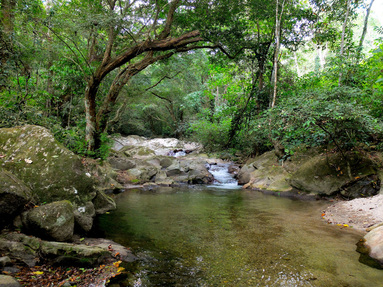 a secluded swimming hole
a secluded swimming hole Looking for a bit of a break from the intense heat of Santa Marta and the Caribbean coast, we decided to head up into the tiny town of Minca, nestled away in the Sierra Nevada mountains (which include the highest tropical mountain in the world). After forty five minutes up a bumpy dirt road we found ourselves standing in the tiny main square of a quiet, two-street town with a couple of small restaurants, a tiny market and an internet cafe - this is our kind of place!  a secluded swimming hole a secluded swimming hole Minca is an up-and-coming eco-tourist destination, a great place to relax in the cooler mountain air while taking a break from the hours of hiking accessible from town. A great place for bird-watching, taking a dip in the local swimming holes, touring the nearby coffee plantation, or just walking for hours on the tiny dirt road that leads further up into the mountains from Minca. Minca's also a possible starting point for treks to the Lost City (La Ciudad Perdida) - I wish we'd known this before spending time in nasty Santa Marta (though we wouldn't have saved Charles, the dumpster kitten if we hadn't gone there).
0 Comments
Our next stop was to a small alternative town called San Marcos Sierra, about an hour drive north of Capilla del Monte. It was recommended to us by some friends, Rafi and Flor, who we met in while volunteering in Jinotega, Nicaragua. 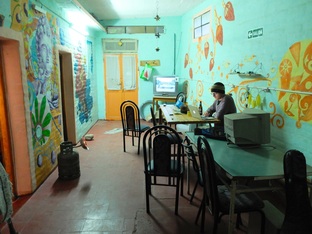 the common area of our hostel the common area of our hostel It was pretty much what I was expecting: free-spirited happy people, artisan booths, jam sessions at night, people walking and biking around with accordions, guitars, colourful homemade clothing, delicious fresh-baked goods and fresh produce for sale. It was awesome!
When we checked into our hostel, which was basically a man named Hernan's house with some extra rooms, we asked for the key and Hernan looked at us in a funny way and told us that they don't lock anything in this town. "No one has even been robbed and it's just not that kind of place. Our town is built on trust." So, hesitantly at first, we accepted this and unpacked our stuff. We weren't sure how long we would stay at first but it ended up to be about a week in total. We wandered around the town on the first day and checked out one of the many honey farms, "El Arbol", which was really interesting. In their storefront they had something like a dozen different types of honey available, all of different colour, consistency, and flavour. Did you know that the honey produced depends on the type of plant that's currently in bloom? This place times their harvests so that they can isolate the properties of a given set of plants - neat-o! We got to sample each of the flavours and bought a couple tiny jars to enjoy later. Recently, while in the mountain town of Boquete, Panama, I had the opportunity to take a tour of a small coffee farm, and thoroughly enjoyed being able to see firsthand how my favourite morning beverage makes it all the way from the seed to my cup. It blew my mind how much work actually goes into producing a cup of coffee, so I thought I’d share with you the “story of coffee”. Enjoy! ~Mandrew Origin of Coffee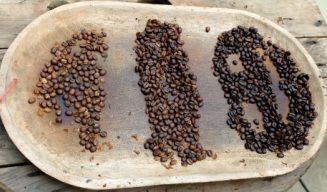 light, medium, and a happy dark roast light, medium, and a happy dark roast With a coffee shop or four on every street corner these days, it’s easy to take it for granted that most days begin only after I’ve had my first cup of java. After having witnessed the tremendous amount of work that goes into producing coffee, however, I’m forced to wonder – who the heck thought to go through all this trouble? Well, it seems there are a few different stories about how coffee was discovered, and although this one seems the least credible, I find it the most entertaining:
Sometime in the ninth century A.D., an Ethiopian goat-herder named Kaldi noticed that, after eating a certain plant, his goats behaved quite strangely, running and jumping around all nimbly-bimbly. Thinking that he’d be able to get the same kind of energy boost (or maybe just wanting to get high), Kaldi decided to try it for himself. First, he tried munching on some of the berries, but found that they were too bitter. He then tried chewing on some of the leaves, but quickly found them to be too tough and waxy to continue. Next, he got the bright idea of brewing a tea from the leaves, but alas that, too, tasted like crap. In a fit of hopeless rage, Kaldi tore up the plants and cast them into his fire. A few minutes later, however, he noticed that the burnt plants smelled damn good, and after some investigating found that it was the roasted berries that were releasing the fantastic aroma. He ground up some of these roasted berries and steeped them in hot water, and instantly became the happiest man in Ethiopia. 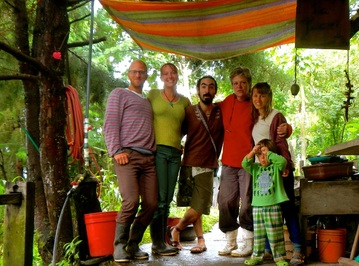 Andrew & I with Rafi, Suzanne, Flor & Fidel Andrew & I with Rafi, Suzanne, Flor & Fidel When we arrived at La Biosfera late Saturday night, we walked up the steep muddy driveway to the lodge area and met Suzanne, the owner who immediately poured us some mugs of the most delicious home brewed herbal tea. She is a VERY interesting character (check our her "Curious Character" profile). Originally from Buffalo, NY, Suzanne's an ex-marine now in her early 50’s, living on a piece of land she owns just outside of Jinotega. Although she lives alone, she has lots of visitors like us coming through all the time (though maybe not as many as she would like). In a few words I guess I would describe her as eccentric, tough and very generous! There was also an Argentine family staying there (Rafi, Flor and their 3 year old son, Fidel) when we arrived who were equally as interesting and mystical, but unfortunately they had to leave the next day. Rafi spoke the most English of them though we tried our best to speak in Spanish as much as possible (and then Andrew and I both had dreams in Spanish, FINALLY!). We talked about just about everything including the meaning of life, water vibrations, UFO's, herbal remedies, etc… Later, when we were getting ready for bed I told Andrew that I felt like we had stepped into – Andrew cut me off and finished my sentence perfectly – another universe… 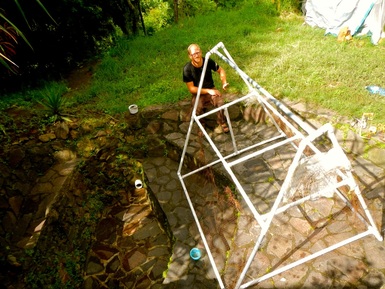 The PVC chicken coop structure coming together The PVC chicken coop structure coming together In the morning we got ready to start some work and said our goodbyes to Rafi, Flor and Fidel – we hadn’t known them for long but for some reason it felt like years. We took a tour of the property with Suzanne, which is huge and so green! There is a waterfall and small river, the bat cave is wicked cool, and the potential for forest preservation and education is enormous! There isn’t too much infrastructure there right now, and lots to do to get some more in there. We did some high priority work for the day including scrubbing the algae off of the walkway so no one would slip and fall. The next day we did some more manual work, as well as put our engineering skills to the test with the design of a lightweight, mobile chicken coop (which we chose to make out of PVC pipe, inspired by the photo booth structure Kim and Nate made for our wedding) as well as a support structure for the squash greenhouse. The chicken coop became our pet project for the next few days, and it turned out very well, we think. Assuming she can be caught, the pet chicken (originally known as "cena", meaning "dinner", but after many battles with the pet dog now known as "cena the warrior chicken") can chill in there now, along with some egg-laying hens Suzanne plans to buy from a neighbour. It was a really fun project even though Andrew and I had some trouble working together as we both like to take the lead on designs, lol. 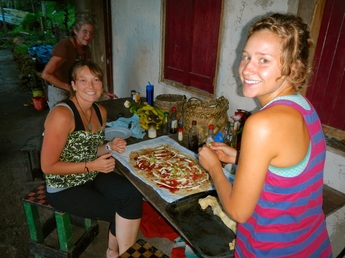 Amanda and I putting the filling in the strudel Amanda and I putting the filling in the strudel After a few more days we got some new visitors! Michael and Amanda are in their early 20's and are basically searching for the meaning of life. They were kind of funny to talk to, and in a weird way, reminded me a bit of Andrew and I when we were their age travelling in Australia (oh so long ago now!). They were very enthusiastic about everything, and really seemed to take what we said, and anyone else said, to heart. We talked about all kinds of wacky, fun things such as, again, the meaning of life, vibrations, water, mermaids, fractals (patterns that repeat on all scales, for example the Fibonacci Spiral found in nature; snail shells; broccoli), free energy, the Bermuda Triangle (which by the way it looks like it could be the location of Atlantis based on some underground quartz pyramids! Seriously! Check Youtube!), pyramid power, DMT, etc. From what I gathered, Amanda grew up in a very religious family and had, only in the last couple of years, begun to question her beliefs. It must have been a very stressful and scary time for her, but now she says she is re-discovering the meaning in her life, and determining what is really important to her. Michael is a free spirit who appreciates nature more than most 20-year-old guys I've known. He thinks outside the box and is in search of new experiences. They make a very good couple, finishing each-other's sentences, sharing the same open-minded philosophies, and they are very supportive of each other. We had a really good time getting to know them over a few days. We even spent one evening making German Strudel with a Nica twist! I used the recipe that Oma taught me before we left the Yukon, but we had to substitute some of the ingredients (instead of apple and raisin filling, we used guava, passionfruit, raspberry extract & coconut oil), and we baked it in a wood-fired cobb oven so it tasted a little smokey which wasn't the best, lol. But it was still fun and turned out pretty well. When the time came to leave, we were very sad to say goodbye. In a very short amount of time we came to know Suzanne, Michael and Amanda surprisingly well. I would say the highlight of La Biosfera for me was the people, and the bonus was the place; nestled in the mountains and full of life. We made some possible plans to meet up with Michael and Amanda in a few months in Peru as they will be heading down there after a short stint back home - I hope we do see them again! We hope you enjoy our pictures, Andrew says that I post too many, but I really have a hard time cutting out any because I think that if they are good they should stay. He thinks that no one will look at them if we keep putting this many, but I guess I don't really mind if you don't, lol. What do you all think? Should we be putting limits on them? Or just keep going as we are so that in the future we can look back at this website and have all our photos on hand? That's my logic anyway... Sorry that we have been running behind on posting, the internet has been pretty terrible these last few weeks, but we are catching up now! Adios Amigos! -Chelsea To open in a new window click here.
For our first “people of interest” profile, detailing a select few of the interesting people we meet during our travels, we are featuring Marcos Garcia, a Costa Rica born-and-raised eco-farmer/ nature guide / football (soccer) player / language professor/ avid birder – you can see why we thought he was interesting. Chelsea and I had the pleasure of spending two weeks with Marcos while volunteering at his farm in Mastatal. 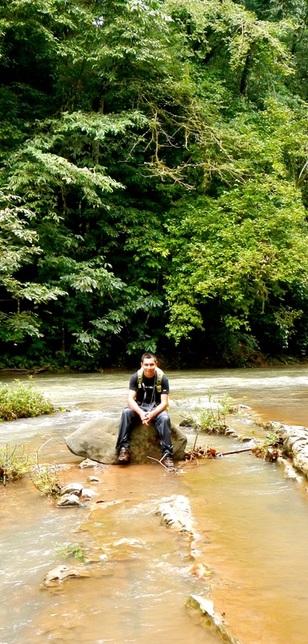 Introduction Marcos is a 29-year-old entrepreneur from the small farming town of Mastatal. While the majority of his peers and family have relocated to the city of San Jose after high school in order to find jobs, Marcos has fought to stay in his home town. After a few unsuccessful career attempts (where he gained valuable trade and language skills) he believes he has finally found his calling in the eco-tourism business, working right out of his own home on his parents’ farm. He spends most of his time doing things he loves including bird-watching, meeting volunteers and guests from around the world who come to stay on his farm (we were some of those), building and landscaping, farming, and guiding tour groups around Mastatal and other regions of Costa Rica. Background Marcos grew up on his parents’ farm in the small town of Mastatal, consisting of four or five locally-owned farms and, including a few of the smaller neighbouring communities, about 150 people. He spent most of his adolescent life helping his parents on the farm, milking and herding cows, managing a few horses and chickens, and growing produce including corn, beans and rice. Costa Rica is an amazing place to live in such a way – it seems that everything grows ridiculously fast, and cows and chickens are seen wandering pretty much everywhere. One of the coolest things we learned during our short visit to Mastatal was that all of the farmers in the country plant crops according to the lunar cycle. I’m not sure if they do this at home but it was the first time we’d heard about it. Because Mastatal didn’t have a secondary school while Marcos was growing up, each day he and the other kids rode the bus for about 45 minutes to La Glora High School in a neighbouring town. Once finished high school, many of Marcos’ friends moved away to look for work, the majority finding themselves in the capital city of San Jose. This was not the life Marcos wanted for himself (fair enough, San Jose is a crazy place, interesting, but crazy). Soon after Marcos finished high school, a professional carpenter came to Mastatal and trained Marcos and ten other students during a one-year carpentry internship. The group received on-the-job instruction while building the local community center. Although the training was valuable, Marcos soon found that in Mastatal he could not make a living at carpentry alone. 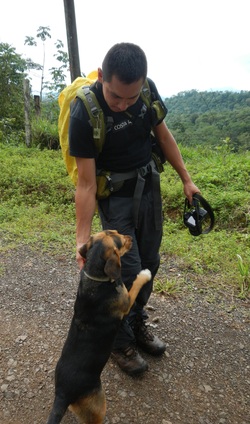 Growing up, Marcos was always fascinated with the English language. His first exposure was through music (we were quite surprised to find that much of the local popular music was stuff we knew from home – lots of Bob Marley, Green Day, Celine Dion, Creed, etc.). Marcos quickly fell in love with the language, devouring any books he could get his hands on and eventually teaching himself enough to become almost completely fluent. After speaking with Marcos for a few days, we were amazed to find that he had learned English independently in this way. After working for a couple years as a carpenter, Marcos worked teaching English in the local grade school. Although he enjoyed working with the kids, he often found that their parents were a bit too much to handle. In 2002, La Cangreja National Park was created near Mastatal. This led to a local boost in eco-tourism, and around this time, a few local farms began offering volunteering and internship positions for travelers. Marcos saw an opportunity in this and started “Finca Siempre Verde” on part of his parents’ land. Starting with just a couple small cabins in the middle of the rainforest, Marcos and his volunteers have now built a two-story building including a large classroom / yoga studio, two large dormitories each with beds to sleep about fifteen, a private room (the “honeymoon suite” during our stay), and an area below for relaxing in hammocks. Pretty sweet place to stay! As part of his eco-tourism offering, Marcos also recognized an opportunity to teach Spanish to English-speaking travellers. He received training and became a certified Spanish instructor, and has been teaching his guests (which included us for two weeks) for the past nine years. To further supplement his income from the farm, Marcos also works as a tour guide for groups of students from a few different Universities in Washington state, leading them on multi-week trips around the country and sharing with them his knowledge of the local culture and ecology. 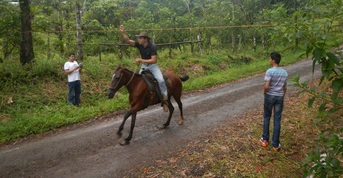 Marcos narrowly missing the tiny ring Marcos narrowly missing the tiny ring Interests and hobbies Marcos’ passion for birding was quickly evident from his habit of stopping mid-conversation to eagerly point out some rare species of bird that happened to sing, fly by or stop to rest on a distant treetop. Apparently, his passion for bird-watching is not uncommon in the area: Mastatal is in a region of Costa Rica which boasts some of the best birding worldwide. On a three-week trip guiding a group up and down the Pacific coast, Marcos claimed to have seen over 300 species of birds! Horseback riding is also among Marcos’ favourite activities, having ridden since he was a small child. In town, he often competes in a game called “carrera de cintas” where riders gallop under a tiny hanging ring and catch it on the end of a pencil-sized stick. Marcos also enjoys playing football (soccer) on the local team and watching the regional games twice a week on TV with his father. Interview with Marcos Note: the translations below might not be 100% correct. We did our best, any mistakes can be blamed on Marcos, our spanish teacher. =) What do you think is the meaning of life? DESPERTARSE CADA PODER ABRIR LOS OJOS Y PODER REALIZAR LAS COSAS QUE LE HARAN FELIZ - “To wake up, open your eyes and do what makes you happy” VIDA ES PODER VER LO LINDO DE CADA DIA Y PODER DISFRUTAR CADA MINUTO DE EL DIA INDEPENDIENTEMENTE DE LO QUE SE ESTE HACIENDO - “Life is to be able to see the beauty of every day and be able to enjoy every minute regardless of what you are doing” Where do you see yourself in five years’ time? POR SUPUESTO EN EL LINDO PUEBLO DE MASTATAL CONTINUANDO EN LA FINCA GRECIENDO Y TENIENDO LA OPORTUNIDAD DE MOSTRAR A OTROS UNA MANERA DIFERENTE Y SOSTENIBLE DE VIVIR EN ESTE MUNDO. – “Of course, living in the beautiful town of Mastatal continuing to grow the farm and showing others an alternative and sustainable way of living in this world” What do you love about Mastatal? LA PAZ -LA TRANQUILIDAD -LOPURA VIDA DE LA GENTE – “The peace, the tranquility, and the pure life of the people” 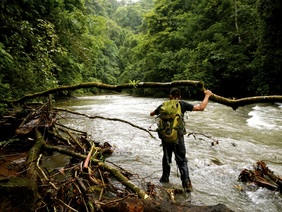 What do you see as the biggest problem in Mastatal? LA NECESIDAD DE TRABAJOS PARA QUE LA POBLACION NO TENGA QUE SALIR DE MASTATAL A OTROS LUGARES Y ASI CONTINUEN EN SU TIERRA – “The lack of jobs, forcing people to leave Mastatal instead of continuing to work on their own land.” What would you do with yourself if your parents were to sell the farm? MOVERME A LA CIUDAD TRABAJAR COMO POLICIA O CARPINTERO Y TENER UN GRAN NECESIDAD PERDIDA POR NO PODER REALIZAR UN SUEÑO – “Move to the city and work as a policeman or carpenter, and miss out on being able to realize my dreams.” If you could travel to any place in the world, where would you go and why? ME GUSTARIA IR A CUBA PARA PODER TENER UN EJEMPLO DE COMO ERA LA VIDA CUANDO IS PAPAS CRECIERO. TAMBIEN VIAJARIA AL AMAZONAS EN BRAZIL PARA PODER VER LA NATURALEZA ALLA. – “I would like to go to Cuba in order to see an example of how life was when potatoes/the pope was growing. Also travel to the Amazon in Brazil in order to see the nature there.” What is your opinion of the growing tourism industry in Costa Rica? ES BUENO SIMPRE QUE SEA EN FORMA SOSTENIBLE CON SEGURAS FORMAS DE CONTROL Y QUE SEAN FUENTES DE INGREASOS PARA LA POBLACION COSTARRICENSE. – “It’s good as long as it’s done in a controlled and sustainable manner and is bringing income for the Costa Rican people.” Who were the coolest Canadians you have met? COOLEST: YOU PLURAL (the two of us, of course) COOL: A FRIEND COOL AARON & A FREIND 67 BETTY FROM CALGARY Do you have any regrets? NO SIMPLEMENTE EL NO PODER TENER LA FACILIDAD DE VIAJAR POR EL MUNDO PARA PODER VER NUEVAS COSAS PARA APRENDER Y PODER APLICARLAS EN MI VIDA Y PROYECTOS PERSONALES. – “Only that I haven’t the opportunity to travel the world, see and learn new things and be able to apply them to my life and personal projects.” Thanks, Marcos, for the great experience & we wish you the best of luck in realizing your dreams! Pura Vida, Mandrew & Chelsea |
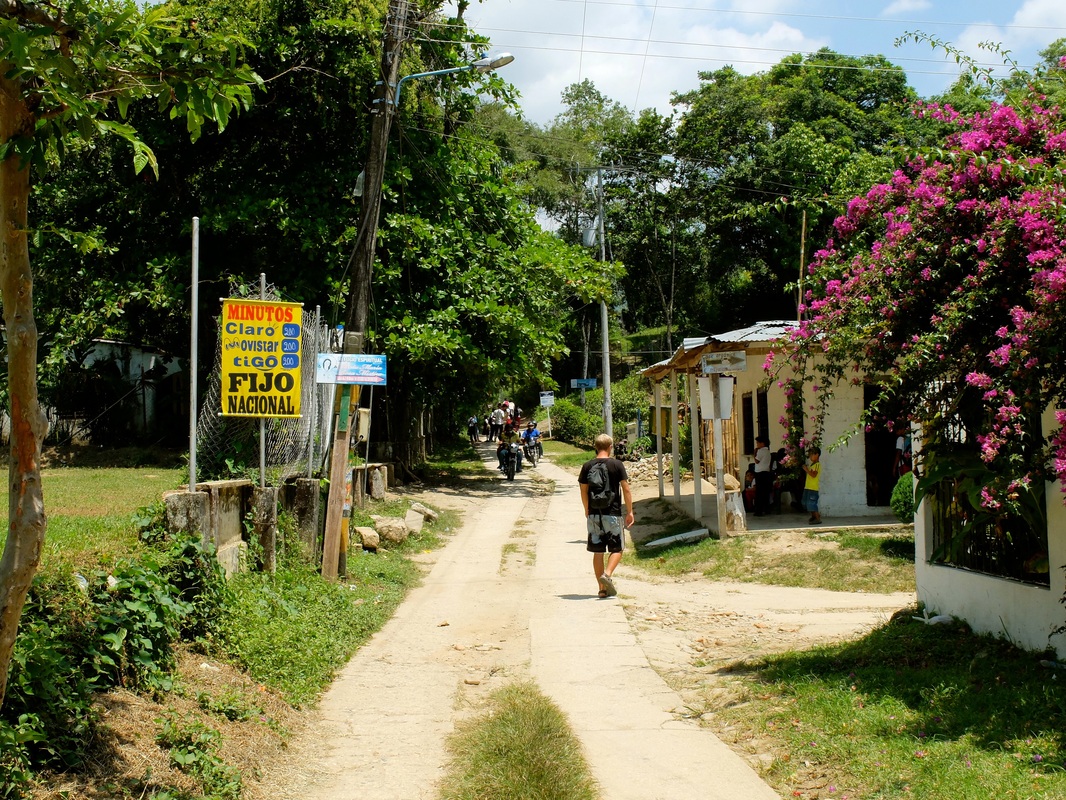
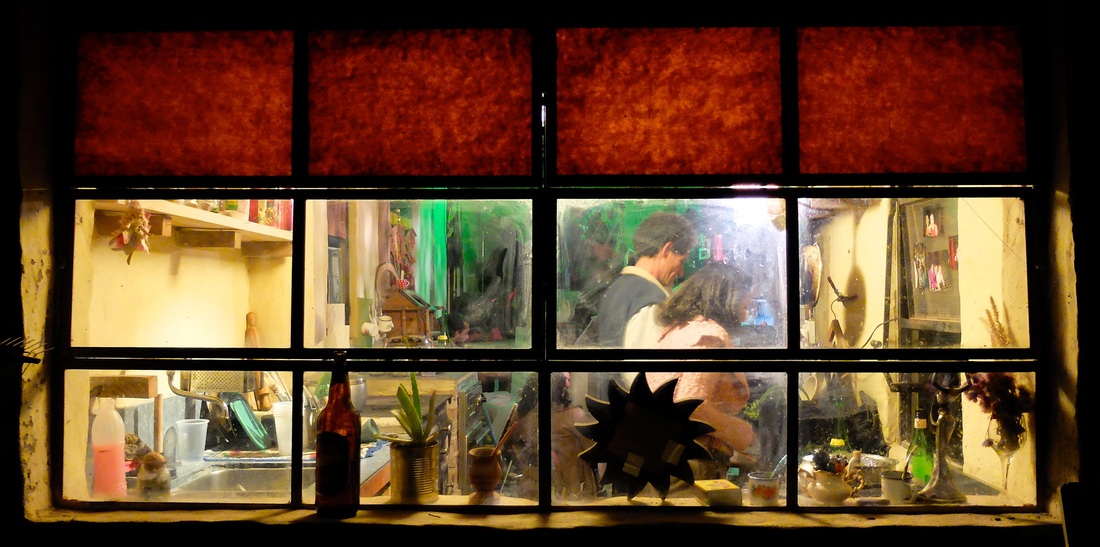
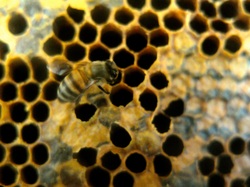
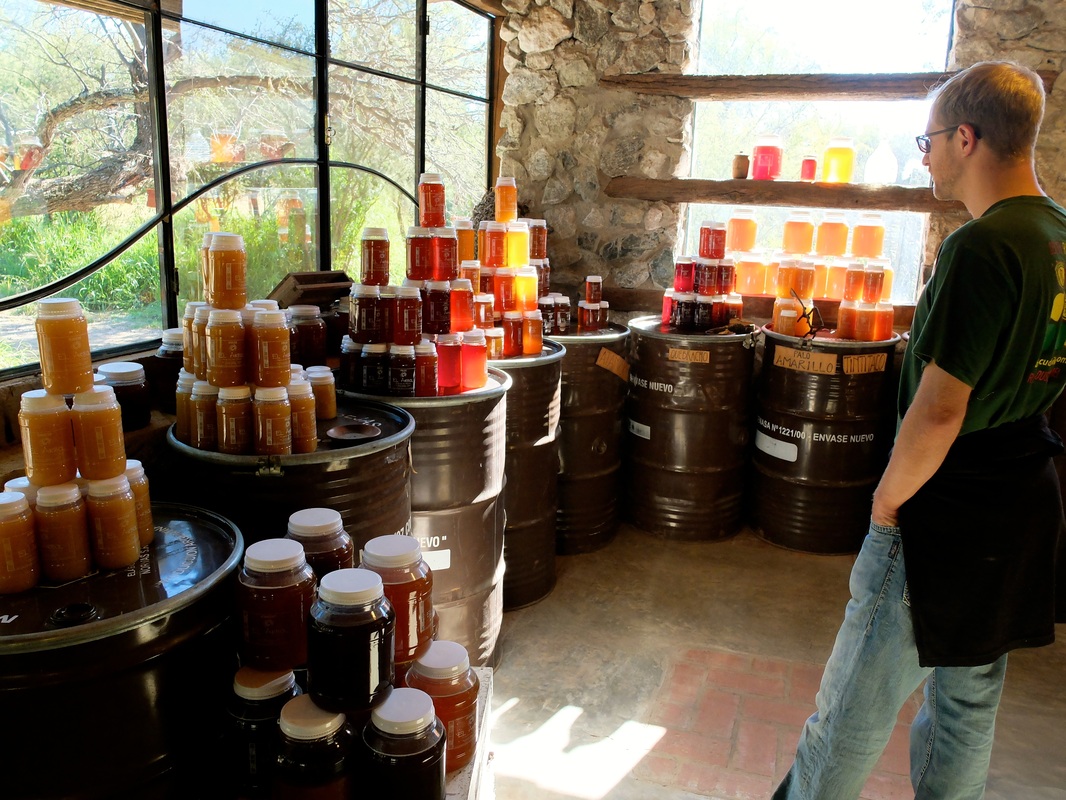
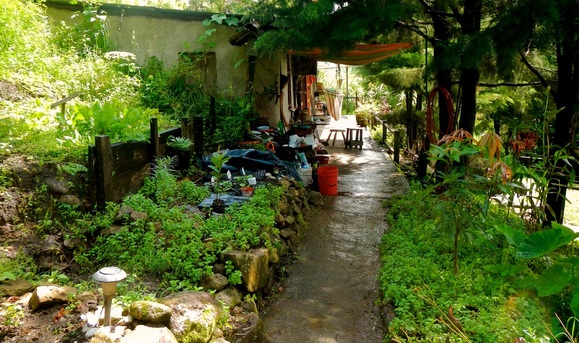
 RSS Feed
RSS Feed